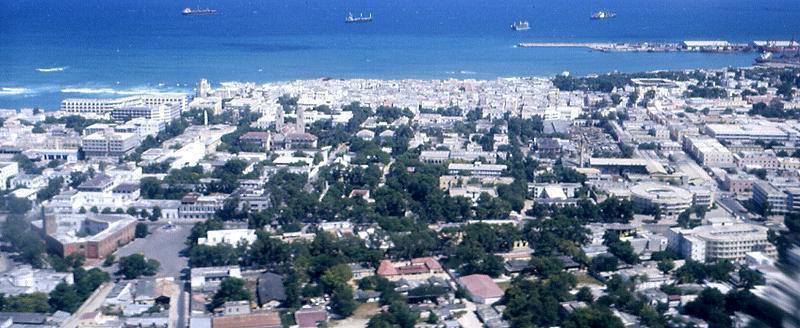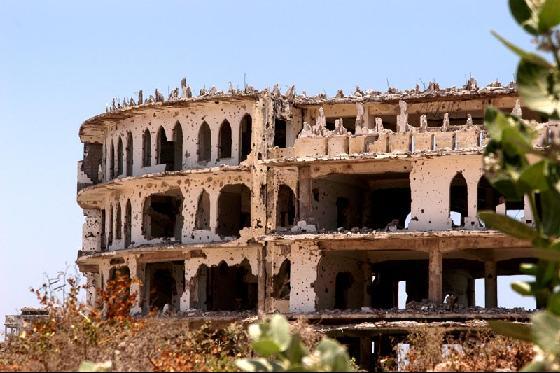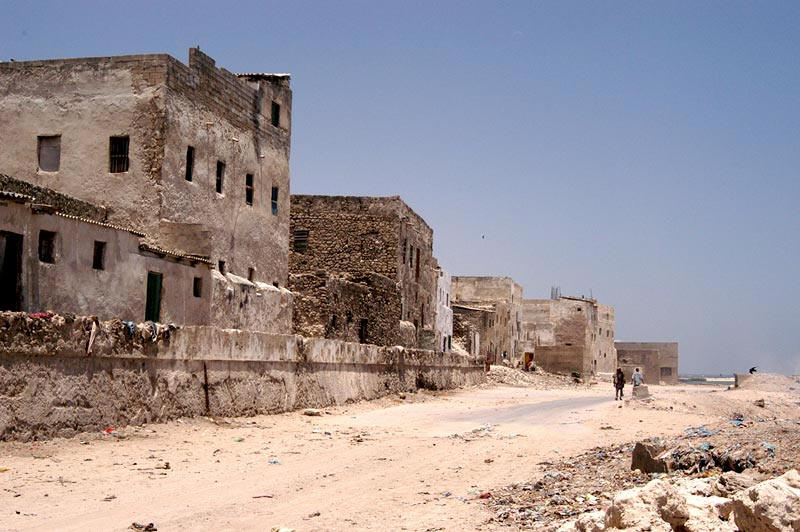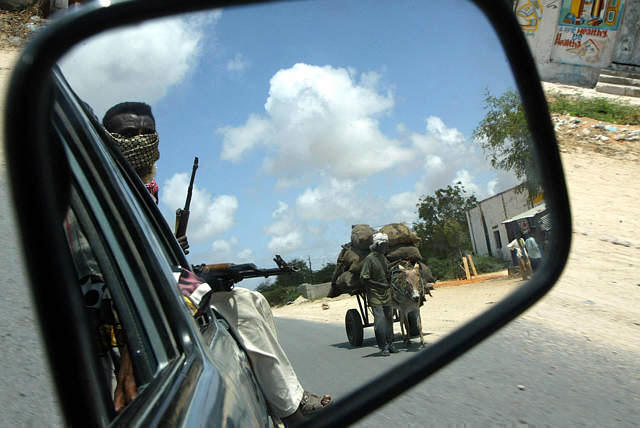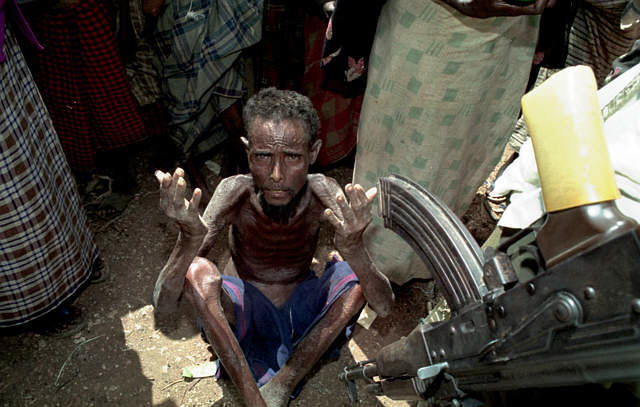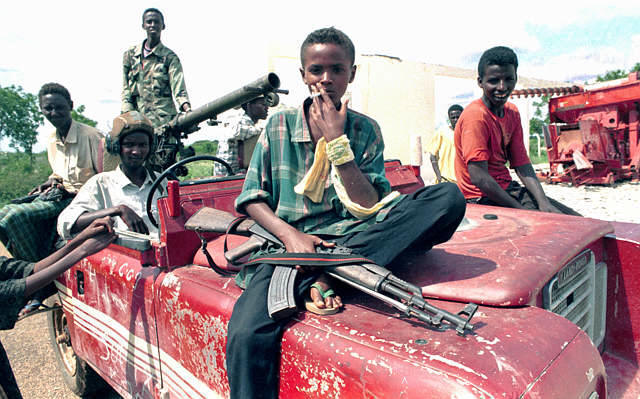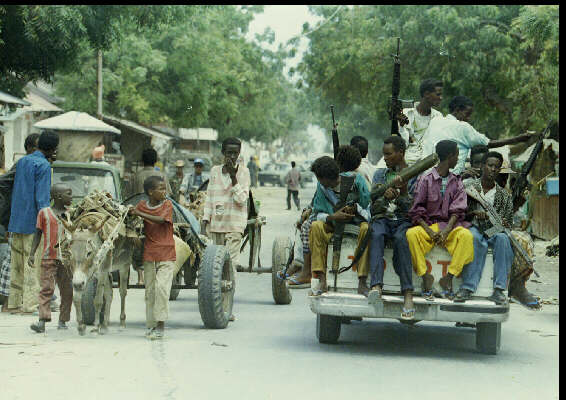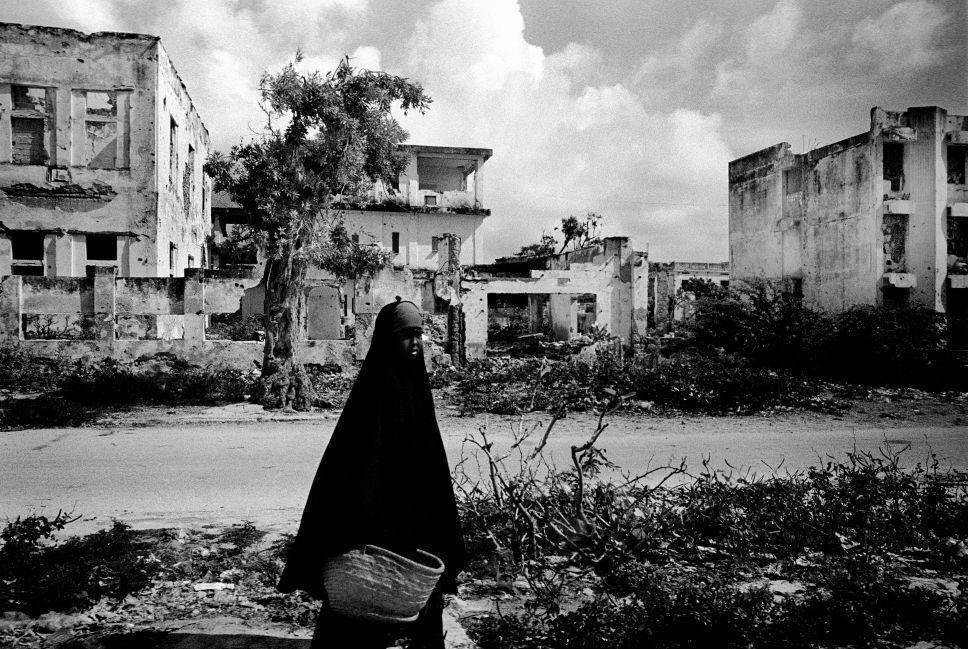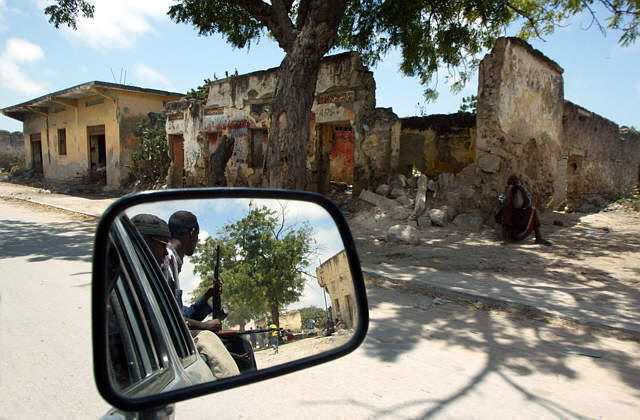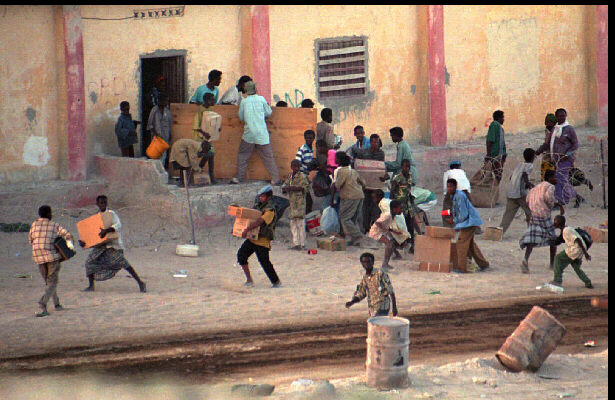| Zooming into the Past |
|
M O G A D I S H U C I V I L W A R S
Introduction
Zooming into the 1990s interviews and statements, given by the spokespersons and leaders of Somali factions, enables us to prove that clan-animosity account of the Somali civil war has not been given the scholarly attention that its magnitude warrants, even after sixteen years of clan-warfare. This clan-animosity feeling can in fact be derived from faction joint communiqué and statements; and therefore, posting selections of these public relation statements should be a matter of concern to all Somalis – particularly, to those who are in the field of Somali Studies.
After all, clan factionalism disguised in English acronyms (formed from three or four initial letters which include the sacrosanct letter “S”) are now facts of life for Somalis. The words and deeds of the turbulent faction followers have ordained to presuppose that faction spokespersons assumed a monumental role in fuelling clan-hatred. As a result of that, the Forum rushes in to investigate and share with you excerpts of faction communiqués, hoping to find solutions to the current tragic political situation in Somalia. From our perspective, these selections are indeed those that Western scholars/(Somalists) most neglected, or could offer hints to the causes of the civil war.
D E C E M B E R 1 9 9 1
Somali gunmen drive through the streets of Mogadishu
OLD MAN BEGS FOR HELP FROM SOMALI GUNMAN IN CITY OF BAIDOA, SOMALIA
A young Somali smokes and holds a weapon as he and his friends sit on a car
Children pulling a donkey cart watch a carload full of armed militiamen pass through the streets of Mogadishu
Somalia Self-Destructs, And the World Looks On
By JANE PERLEZ 29 December 1991 The New York Times Late Edition - Final
NAIROBI, Kenya -- GUARDS with automatic rifles roam the corridors these days in the decrepit three-story building that houses the Digfer Hospital in the Somali capital. Even in the casualty section, business is conducted at gunpoint as armed men bring in their wounded children and demand attention from a handful of nurses overwhelmed by too many victims and not enough supplies.
For more than a month now, Mogadishu, a once-languid city of whitewashed buildings and tropical foliage, has been enveloped in a mad swirl of self-genocide. Two men, Gen. Mohammed Farrah Aideed and the President of Somalia, Ali Mahdi Mohammed, are waging a personal struggle for control of the ruined city. They belong to the same political grouping (the United Somali Congress) and the same tribe (the Hawiye) but different subclans. Their vendetta has brought the deaths of more than 4,000 people and wounded more than 10,000 others in a war that the world, with more important items on the agenda, chooses to ignore.
"The slaughter keeps going up and up," said Sam Toussie, an epidemiologist with the International Medical Corps, one of a handful of agencies struggling to cope with the humanitarian disaster. "We've been getting whole families coming in with shell injuries, with torn-open bodies. Cannon fire takes a chunk of a person out. There is nothing we can do with those."
The fighting in Mogadishu outdoes the ferocity of the battle in Liberia last spring, when humanitarian workers were shocked by the carnage of that country's civil war. "It is far worse than Liberia; the fighting is so indiscriminate you have many more civilian casualties," said Joseph Gettier, the State Department's operations chief for foreign disaster assistance in Washington.
On Dec. 14, a Belgian Red Cross worker died after being shot in the stomach on a Mogadishu street while trying to organize the distribution of food. Since then, the International Committee of the Red Cross, which has been shouldering most of the humanitarian work in Mogadishu, has reduced its medical and aid staff in the city from 20 to 6. In all, only about 25 aid workers remain.
With starvation looming, food has become the most valuable commodity, according to Gregoire Tavernier, deputy head of the Red Cross delegation in Somalia. "If you have food you are killed," he said. The Red Cross's last stocks of food -- 60 tons -- were looted from a warehouse after the shooting of the aid worker, Mr. Tavernier said.
There appear to be a number of reasons for the extent of the bloodbath. First, for all intents and purposes Somalia has ceased to exist as a national entity. Anarchy has reigned since the Somali leader of 21 years, President Mohammed Siad Barre, was ousted in January by Mr. Ali Mahdi and General Aideed. In northern Somalia, once the British colony known as Somaliland, the Isaak tribe has declared a separatist republic that no foreign government has yet recognized. In the south, where until 1960 the Italians ruled, Mr. Ali Mahdi tried to replace Mr. Siad Barre's Government but failed. Aggressive Nomads
Second, the Somalis are an individualistic people. Many are nomads of great stamina, who herd camels, goats and sheep over vast sandy distances, through punishing heat. They are divided among a myriad different clans and they lead a life in which aggressiveness and military prowess in clan rivalry have traditionally been rewarded.
Against this backdrop, an enormous quantity of high-powered weaponry flowed into Somalia for Mr. Siad Barre's regime during the cold war. The Russians first wooed Mr. Siad Barre and then ditched him in 1978 for neighboring Ethiopia; from that point, Washington helped out with Mr. Siad Barre's military expenses. By early this year, Mr. Siad Barre had stockpiles from his superpower friends as well as from Libya, Germany, China and Italy. Now all of this arsenal -- tanks, artillery pieces, anti-aircraft guns, multiple rocket launchers -- has fallen into the hands of the warring factions.
With the end of the cold war, there appears to be little incentive for either the United States or Europe to try to settle the Mogadishu conflict. Somalia's location on the Indian Ocean and the Gulf of Aden is no longer considered so important a strategic prize and Washington, with much graver geopolitical matters on its mind, has concentrated on some humanitarian assistance.
Diplomatically, the United States has done little but "thrash around ideas," an American official said. Senior Administration officials rejected the suggestion, made by some at the State Department, of putting Somalia onto the Security Council agenda at the United Nations.
There is, as well, no discernible interest by neighboring countries in resolving the conflict. "The Somalis lack friends," said an American diplomat. "They are not Arab enough for the Arab League and not African enough for the Organization of African Unity." Besides, he added, neither organization is known for its vigor.
After the United States criticized the United Nations, in particular the United Nations Children's Fund, for its conspicuous absence in a war that had brought the deaths or severe wounding of many thousands of children in less than six weeks, UNICEF sent three representatives to Mogadishu last week. As a result of their discussions, UNICEF announced Friday that a team of their workers would be in Mogadishu by this Tuesday to begin a substantial program of emergency intervention.
On Dec. 18, Salim Ahmed Salim, Secretary General of the Organization of African Unity, made his first statement about the Mogadishu conflict, which was then a month old. He called on the two sides to stop fighting and offered his services as a mediator. So far, there has been no response. The sound of gunfire from Mogadishu continues.
Photo: Civil war between subclans in Somalia is creating a bloodbath in Mogadishu, where casualties lay outside a hospital this month. (Raymond Bonner for The New York Times)
© Copyright 1991 The New York Times Company. All Rights Reserved.
Nightmare of Mad Max war
By Andrew Hogg December 29, 1991 The Sunday Times
The bloodshed in the Somali capital of Mogadishu appears to be worsening, with a United Nations report claiming 20,000 people have been killed or wounded in the past six weeks.
In one of his last public pronouncements before he retires from office this week, Javier Perez de Cuellar, the secretary-general, expressed "profound shock and concern" over the fighting, which he said had turned the city into a "nightmare of violence". Thousands were fleeing and many had no access to food, medical supplies, shelter and water.
His appeal was echoed yesterday by Lynda Chalker, the overseas development minister, who urged an end to the bloodshed. "The British government particularly deplores the recent shooting of aid workers and the failure of those in charge of the warring factions to ensure that medical and relief supplies can safely enter the port and be distributed to innocent civilians," she said.
Recent reports from the capital, a weird amalgam of primitive shacks and grandiose fascist architecture from the days of Mussolini's occupation, indicate that law and order has collapsed and civilians are scrabbling to survive amid the rubble.
Those who have not fled live in constant fear of attack by "Mad Maxes", jeeps full of hysterical, heavily armed youths, many sporting dark glasses and women's wigs, who take their name from the series of Mad Max films about life in a post-apocalyptic wasteland.
Although the people are starving, the jeeps, manned by members of different clans, have looted, and blocked the distribution of, thousands of tons of foodstuffs from the docks. Medical supplies are insufficient and the hospitals are overflowing with casualties. A shortage of doctors means that partly trained nurses have carried out major surgery.
There is no respite in sight for the people of Mogadishu as heavy fighting, including shelling, continued this weekend between rival factions of the Hawiye clan, which 11 months ago overthrew Mohamed Siad Barre, Somalia's president.
Bloodshed has became an everyday fact of life as rival Somali clans have carved out their fiefdoms. Six weeks ago the fighting intensified when Ali Mahdi Muhammad, the new president, from one of the Hawiye's sub-clans, was accused by the leader of another sub-clan, General Muhammed Farrah Aidid, of appropriating government funds.
Aidid launched an offensive to drive the new regime from Mogadishu. But Ali Mahdi has hung on.
Ron McCullagh, a producer with the independent Insight News Television company, who returned from Mogadishu 10 days ago, said: "Parts of Mogadishu are now a wasteland. Aidid has used jeeps equipped with anti-aircraft guns to take over much of the city. When they fire on a building, there is little left.
"Different factions also launch what they call `to whom it may concern' missiles. They target an area they know to be controlled by another clan and simply destroy six or seven blocks with rockets and mortars. The main casualties are women and children.
"Rooms in private homes have been turned into makeshift wards. There are limbs lying on the floor, dead bodies in the corridor and fresh blood splattered on the wall. The smell is appalling. It is tribal warfare with modern weapons. The worst part of all is the indiscriminate nature of the killing."
On Friday, Perez de Cuellar announced that the UN, which evacuated its staff from Mogadishu several months ago, plans to draft in a small team of relief workers under the auspices of the United Nations Children's Fund. Plans have also been stepped up to provide food and other supplies.
But until the fighting stops, it is unlikely that the UN workers will make any greater impact than relief workers already there. Earlier this month they were forced to curtail their activities still further when a Red Cross worker was shot dead.
© 1991 Times Newspapers Ltd Not Available for Re-dissemination.
SOMALI GUNMEN DRIVE THROUGH THE STREETS OF THE CAPITAL MOGADISHU
Somalis loot U.N. barracks near the Mogadishu port
|
